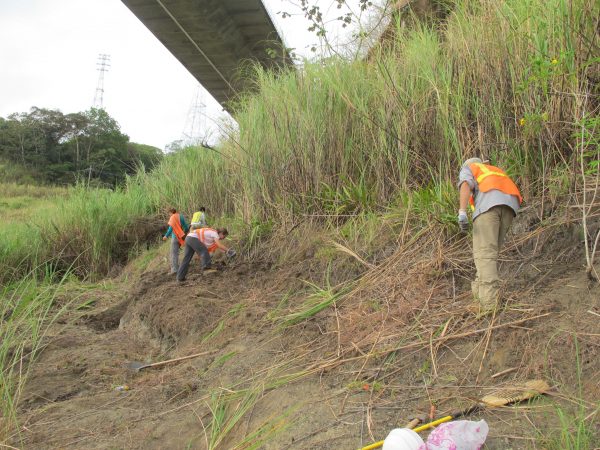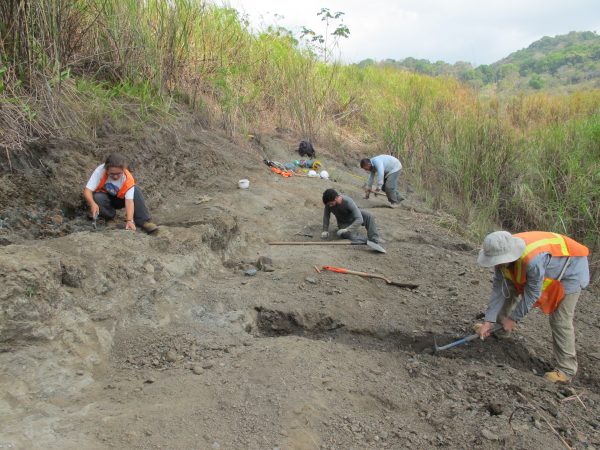
And we’re back! A ton has happened since our last post. A huge group of our scientific partners at the University of Florida spent a week helping us collect fossils in Panamá. It was a wild time, with many folks downing Gatorades to stay hydrated in the blazing afternoon sun. Our combined efforts led to many fossil finds!
Anyhow, we are picking up where we left off. Last time, I described the heavy lifting we did to clean off one of our fossil localities and increase productivity. After we moved all of that sediment, Jeremy found the distal end of a humerus, possible from a fossil rhinoceros! We’ve continued down this path, moving to a new exposure of the Cucaracha Formation.
We just finished up a two-day project to revive our Centenario 6 locality – a fossil collection site where previous researchers have found unique fossils crucial to our understanding of American biogeography. The effort was literally massive. We must have busted up and shoveled nearly one thousand pounds of rocks and sediments with our rock hammers and pickaxes.
In order to continue finding fossils, you have to work to expose layers where bones are most-concentrated – a result of the environmental conditions where the sediment was being laid down millions of years ago. This unit (Cucaracha, ~19 Ma) has produced incredible finds, including part of a jaw from a “bear-dog“ This a carnivorous mammal that originated in the “Old World”, and an Antracothere, which is an artiodactyl ungulate closely related to hippos and which is a sister taxa of whales. These fossils are critical clues, not only because fossil carnivores from this period are incredibly rare, but also because both of these fossils strongly link the mammals living in Panamá during the Miocene to those living contemporaneously in North America. The more evidence we find, the better our picture of Panamá and its role in the relationship between North and South America before the closure of the isthmus. Also, we’re looking to find some monkeys to better complete the picture.
Stay tuned for more! And Go Gators!

